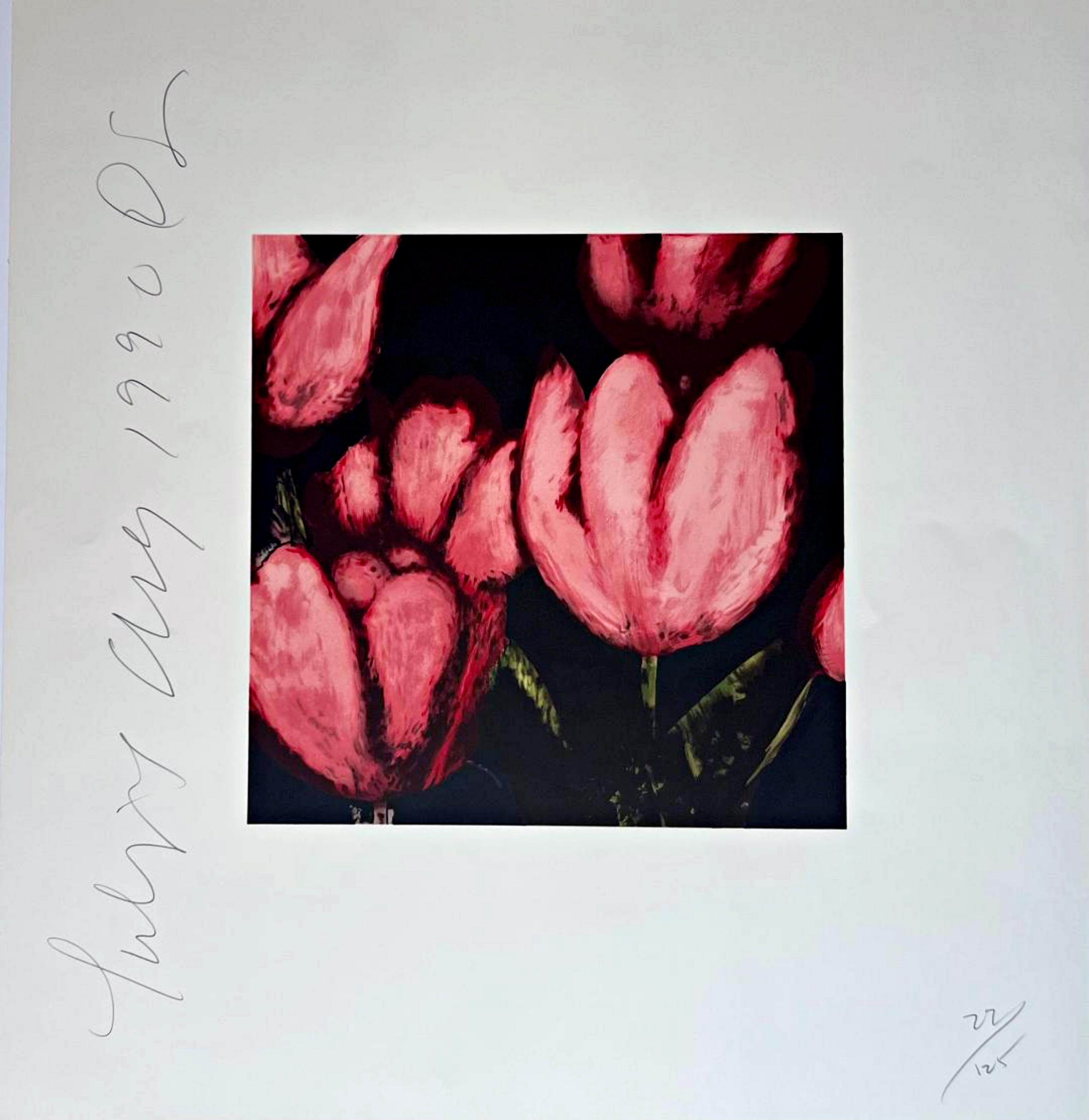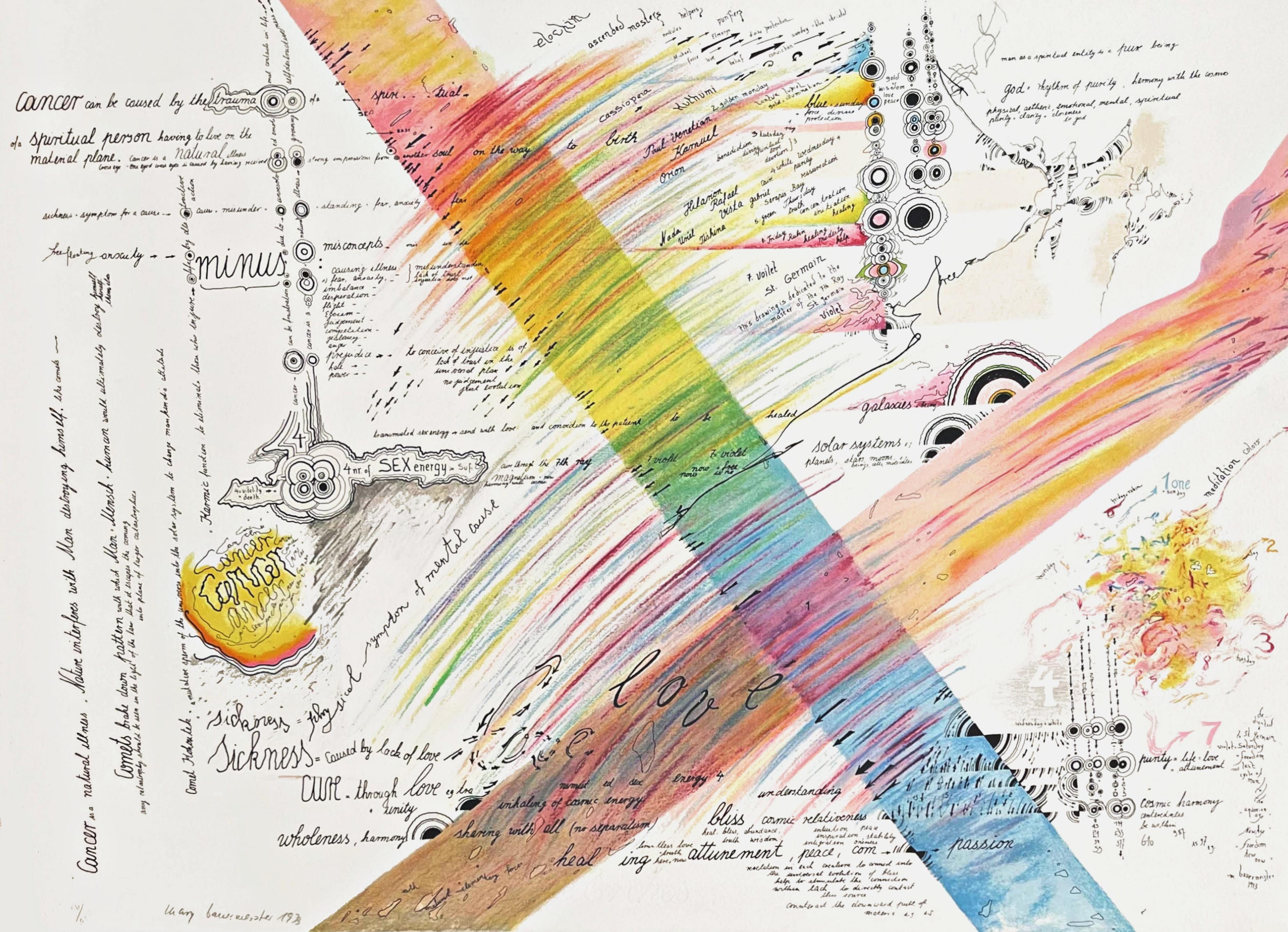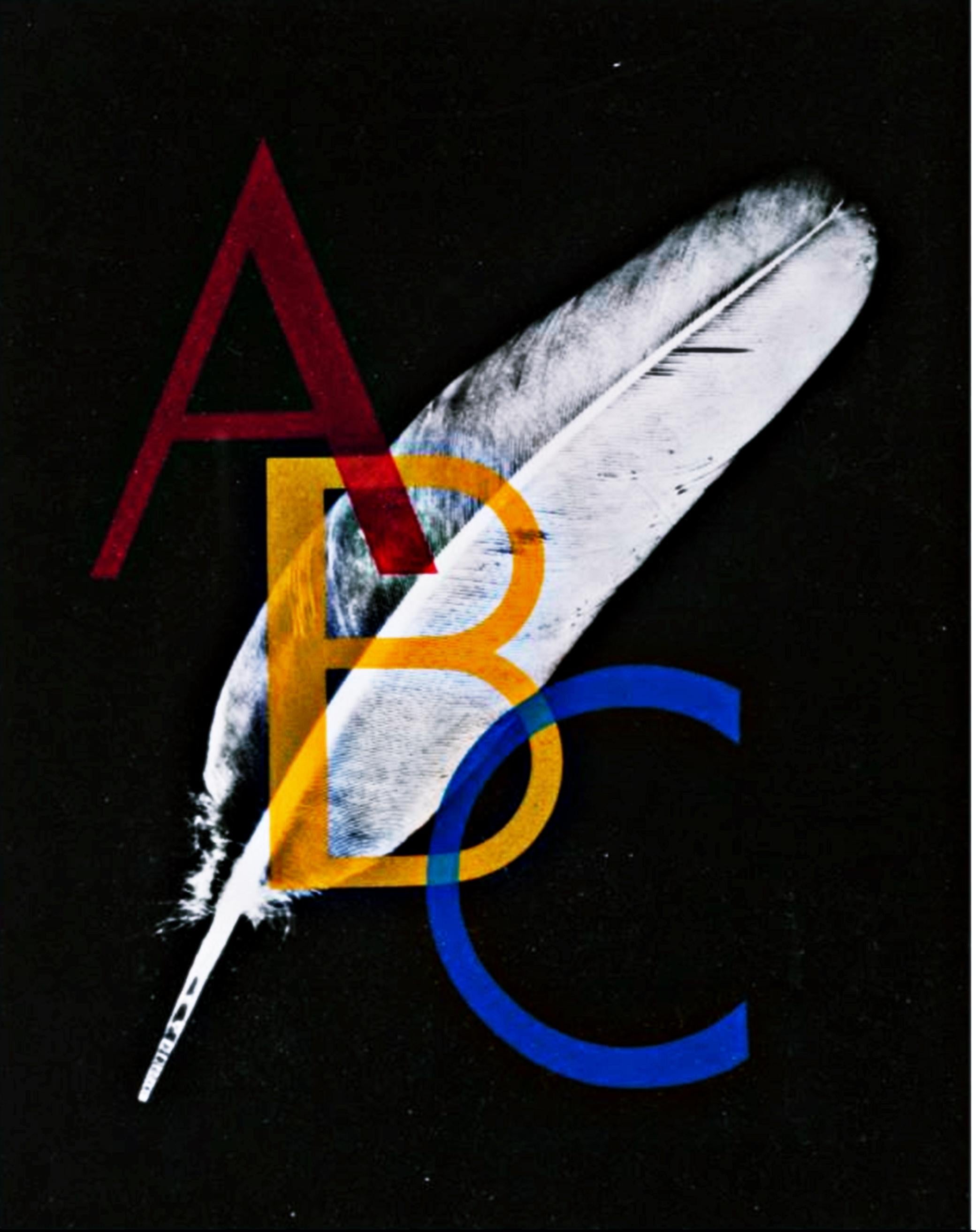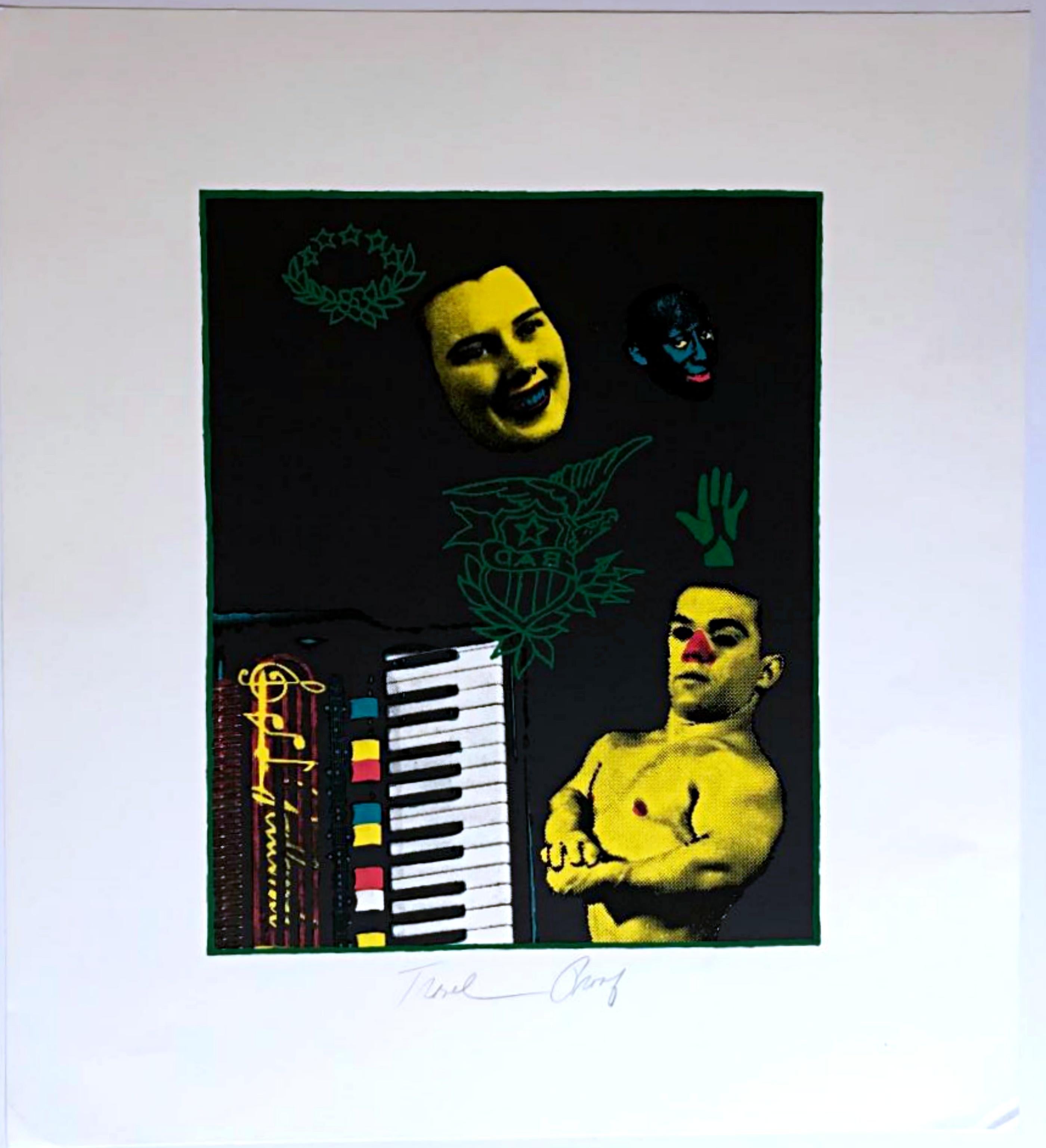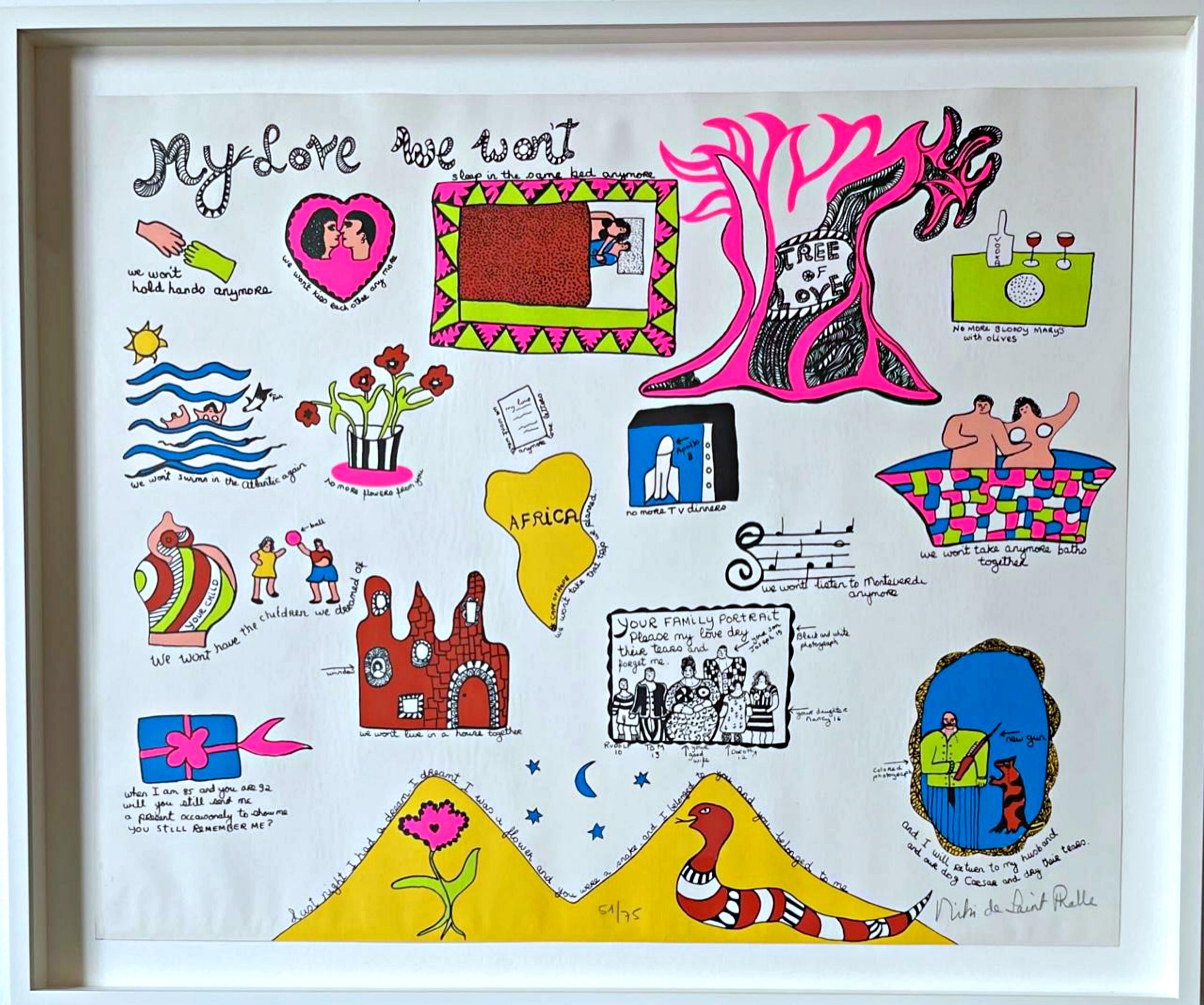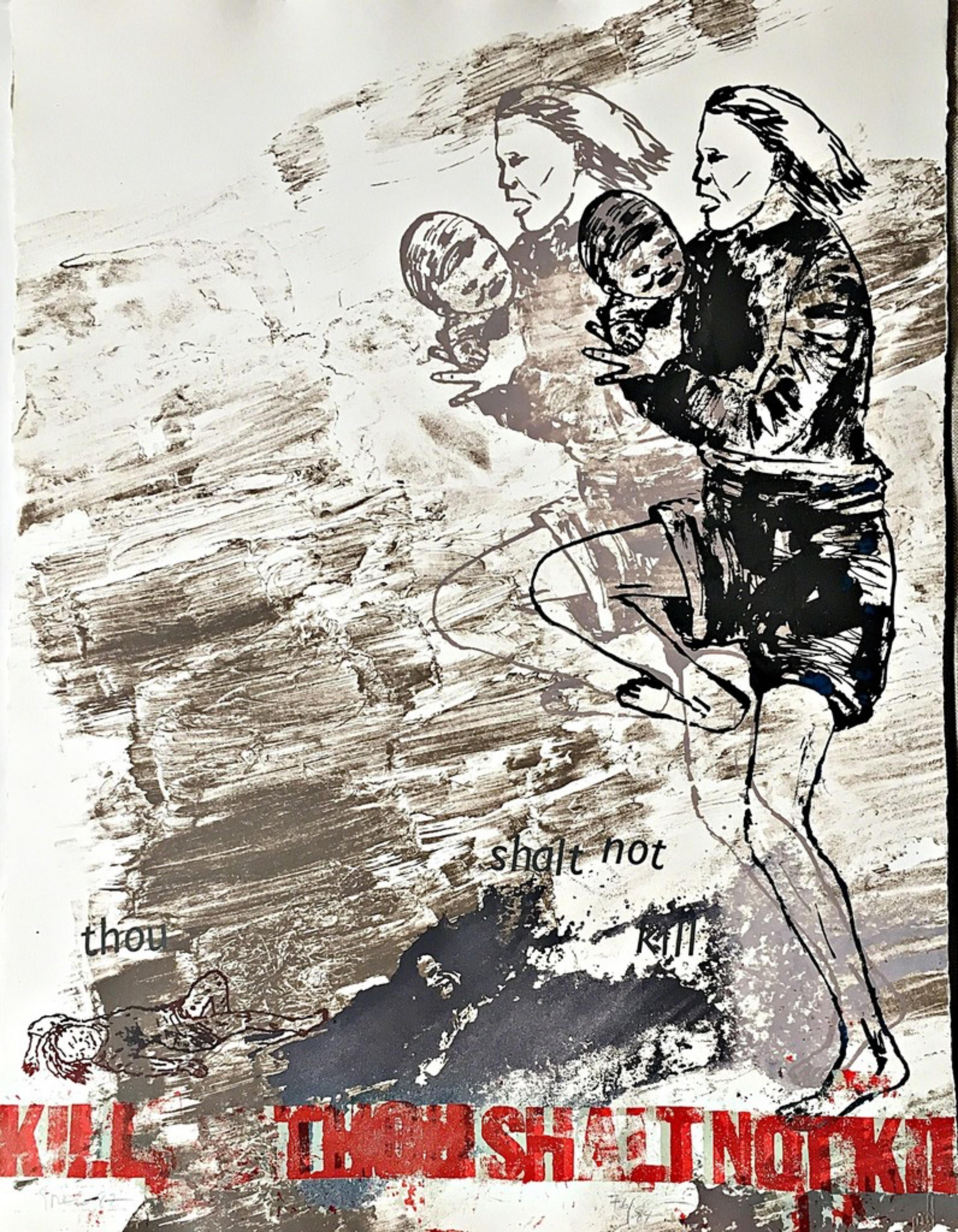Items Similar to Guggenheim Museum Bilbao
Want more images or videos?
Request additional images or videos from the seller
Richard HaasGuggenheim Museum Bilbao
About the Item
Incised signature in aluminum, annotated "Artists Proof" and titled; ink on top smudged
If you've ever visited the Guggenheim Bilbao, you should get this stunning mixed media on aluminum work by the world's premier architectural draftsman. Richard Haas (the subject of major media profiles on CBS News Sunday Morning, The New York Times, etc.) is also the world's premier muralist and trompe d'oil artist - bar none.
Publisher: Black River Press, West Salem, Wisconsin
Printer: Black River Press, West Salem, Wisconsin
Catalogue Raisonne Reference: Szoke, 139
Acquired directly from the artist.
Measurements:
Framed:
25.5 inches x 18 inches x 1
Artwork alone:
24 inches x 16.25 inches'
Publisher: Black River Press, West Salem, Wisconsin Printer: Black River Press, West Salem, Wisconsin
- Creator:Richard Haas (1936, American)
- Dimensions:Height: 235.5 in (598.17 cm)Width: 18 in (45.72 cm)Depth: 1 in (2.54 cm)
- Medium:
- Movement & Style:
- Period:
- Condition:Work is in fine condition. The signature is incised in aluminum; ink on top appears faint. (see photos) due to being signed on aluminum.
- Gallery Location:New York, NY
- Reference Number:1stDibs: LU174529825072
About the Seller
5.0
Platinum Seller
These expertly vetted sellers are 1stDibs' most experienced sellers and are rated highest by our customers.
Established in 2007
1stDibs seller since 2022
292 sales on 1stDibs
Typical response time: 1 hour
- ShippingRetrieving quote...Ships From: New York, NY
- Return PolicyA return for this item may be initiated within 1 day of delivery.
More From This SellerView All
- TulipsBy Donald SultanLocated in New York, NYDonald Sultan Tulips, 1990 Silkscreen on wove paper 23 × 22 inches Pencil signed, titled and dated and numbered 22/125 on the front margins Unframed Richly colored silkscreen of tuli...Category
1990s Realist Figurative Prints
MaterialsScreen
- Rainbow Signed 1970s silkscreen & lithograph by pioneering female Fluxus artistBy Mary BauermeisterLocated in New York, NYMary Bauermeister Rainbow, 1973 Lithograph and silkscreen on creamy white paper Hand signed, dated and numbered 56/250 by the artist on the front 19 x 25.5 inches Unframed This work is on the permanent collection of various institutions like: Rice University, Samuel Dorksy Museum of Art, Rutgers Zimmerli Museum and Wheaton College Massachusetts. While studying the fringe sciences the 1970s, Bauermeister created Rainbow (1973), a lithograph and silkscreen. She uses a creamy white background as the base. Two intersecting diagonal bands of color transcend across the page, and black cursive lettering dances over the surface serving as a mind map of interweaving ideas. Through the central band, Bauermeister shifts through the color spectrum; she begins with red and finishes with violet. Inspired by music, she uses strokes of color that are rhythmically smeared across the lithograph. The surface lettering, a kind of visual poetry, explores her interest in human emotion and science. The viewer can see Bauermeister’s thoughts as they flow into one another through the use of words such as bliss, love, and healing. Bauermeister also includes a repetition of words such as cancer, sickness, and cure. The word cancer emerges from a cell-like shape. A careful study of the words shows that they may seem dark in nature; however, she juxtaposes these words against the cheerful title and colors. Perhaps the rainbow symbolizes a new hope, an inspiration for an optimistic future. -Courtesy to the Samuel Dorsky Museum of Art About Mary Bauermeister: A multidisciplinary artist known for her intricate and enigmatic assemblages, Mary Bauermeister (1934-2023) continues to defy categorization with layered works in a range of media. A precursory figure of the Fluxus movement—her studio was the meeting point for a number of defining artists of the avant-garde—her work plays an integral role in the discussion of art, both European and American, that emerged from the 1960s. Her reliefs and sculptures, which have incorporated drawing, text, found objects, natural materials and fabric, reference a plethora of concepts: from natural phenomena and astronomy to mathematics and language, as well as her own “spiritual-metaphysical experiences.” Maturing amidst the currents of Minimalism and Pop Art, Bauermeister’s art has resisted labels due to the singular expression of her interests and concerns, among them the simultaneous transience and permanence of the natural world with experimentations in transparency and magnification, multiplication and variation, structure and order, chance and ephemerality, introversion and extroversion. Her three-dimensional receptacles of thoughts, ideas, and notes contain visual, conceptual, and philosophical paradoxes that challenge perceptions and that offer literal and metaphorical windows into which one can glimpse the inner workings of the artist’s mind. - Courtesy of Michael Rosenfeld...Category
1970s Modern Abstract Prints
MaterialsLithograph, Screen, Mixed Media, Pencil, Graphite
- Alphabet Pour Adultes (Alphabet For Adults) Silkscreen, lithograph Signed FramedBy Man RayLocated in New York, NYMan Ray Alphabet Pour Adultes (Alphabet For Adults), 1970 Silkscreen in colors and lithograph on paper mounted on wood veneer mounted on card stock. Hand Signed. Numbered. Dated. Ha...Category
1970s Surrealist Figurative Prints
MaterialsLithograph, Screen, Mixed Media, Pencil
- BAD (silkscreen and lithograph print) by renowned Chicago artist expressiionistBy Ed PaschkeLocated in New York, NYEd Paschke BAD, 1991 Silkscreen and Lithograph on Rising Mirage Paper, accompanied by documentation Pencil signed, titled "BAD", and annotated "Trial Proof" on the front 22 × 20 inches Unframed This work is a unique Trial Proof on Rising Mirage Paper, pencil signed by the artist and annotated "Trial Proof" the very first impression, aside from the regular edition. It is accompanied by the tirage sheet, with the biography of the artist and a description of the work. (see photos). As such it is a rare impression. Published by Chicago Serigraphic Workshop and Artco, Incorporated Ed Paschke Biography: Ed Paschke was born in Chicago where he spent most of his life as an important painter. He was initially associated in the late 1960s with the second generation of Chicago Imagists who called themselves The Hairy Who. He received his B.F.A. from the School of The Art Institute of Chicago in 1961 and his M.F.A. in 1970. Between degrees he lived for a time in New York where he easily came under the influence of Pop art, in part, because of his interests as a child in animation and cartoons. His fascination with the print media of popular culture led to a portrait-based art of cultural icons. Paschke used the celebrity figure, real or imagined, as a vehicle for explorations of personal and public identity with social and political implications. Although his style is representational, with a loose affiliation to Photorealism, Paschke’s art plays...Category
1990s Contemporary Abstract Prints
MaterialsMixed Media, Felt Pen, Lithograph, Screen
- My Love We Wont - coveted, whimsical 1960s silkscreen by beloved female artistBy Niki de Saint PhalleLocated in New York, NYNiki de Saint Phalle My Love We Wont, 1968 Lithograph and silkscreen on wove paper Signed and numbered 51/75 in graphite pencil on the front Frame included: elegantly floated and framed in a museum quality white wood frame with UV plexiglass From the Brooklyn Museum, which has an edition of this work in its permanent collection: "Throughout her long and prolific career Niki de Saint Phalle, a former cover model for Life magazine and French Vogue, investigated feminine archetypes and women’s societal roles. Her Nanas, bold, sexy sculptures...Category
1960s Modern Abstract Prints
MaterialsScreen, Mixed Media, Lithograph, Pencil
- Thou Shalt Not Kill (The Sixth Commandment)By Nancy SperoLocated in New York, NYNancy Spero Thou Shalt Not Kill (The Sixth Commandment), 1987 9 Color lithograph and letterpress on Dieu Donne handmade paper 24 × 18 inches Edition AP 2/15 Signed and numbered AP 2/15, aside from the regular edition of 84 Printed by Peter Kruty, Dan Stack and Judy Solodkin Unframed with deckled edges This nine color lithograph and letterpress on Dieu Donne handmade paper is a signed, dated and numbered Artist's Proof, numbered AP 2/15, aside from the regular edition of 84. It was created as part of the 1987 portfolio "The Ten Commandments", in which ten top Jewish American artists were each invited to choose an Old Testament commandment to interpret in contemporary lithographic form. The "Chosen" artists were, in order of Commandment: Kenny Scharf, Joseph Nechvatal...Category
1980s Realist Abstract Prints
MaterialsLithograph
You May Also Like
- Blue Face from the Brushstroke Figures SeriesBy Roy LichtensteinLocated in Miami, FLLithograph, waxtype woodcut and screenprint on 638-g/m cold-pressed Saunders Waterford Paper. From the "Brushstroke Figures" series, 1989. Hand signed rf Lichtenstein, dated ('89) a...Category
1980s Contemporary Abstract Prints
MaterialsLithograph, Screen, Woodcut
- Joe Tilson British Pop Art Screenprint, Color Lithograph 4 Seasons 4 ElementsBy Joe TilsonLocated in Surfside, FLSilkscreen screenprint or Lithograph Hand signed and numbered. An esoteric, mystical, Kabbala inspired print with Hebrew as well as other languages. Joseph Charles Tilson RA (born 2...Category
1970s Pop Art Abstract Prints
MaterialsLithograph, Screen
- Judy Rifka Abstract Expressionist Contemporary Lithograph Hebrew 10 CommandmentBy Judy RifkaLocated in Surfside, FLJudy Rifka (American, b. 1945) 44/84 Lithograph on paper titled "Thou Shalt Not Bear False Witness against Thy Neighbor"; Depicting an abstract composition in blue, green, red and black tones with Hebrew script. Judaica interest. (I have seen this print described as a screenprint and as a lithograph) Hand signed in pencil and dated alongside an embossed pictorial blindstamp of a closed hand with one raised index finger. Solo Press. From The Ten Commandments Kenny Scharf; Joseph Nechvatal; Gretchen Bender; April Gornik; Robert Kushner; Nancy Spero; Vito Acconci; Jane Dickson; Judy Rifka; Richard Bosman and Lisa Liebmann. Judy Rifka (born 1945) is an American woman artist active since the 1970s as a painter and video artist. She works heavily in New York City's Tribeca and Lower East Side and has associated with movements coming out of the area in the 1970s and 1980s such as Colab and the East Village, Manhattan art scene. A video artist, book artist and abstract painter, Rifka is a multi-faceted artist who has worked in a variety of media in addition to her painting and printmaking. She was born in 1945 in New York City and studied art at Hunter College, the New York Studio School and the Skowhegan School of Painting and Sculpture in Maine. Rifka took part in the 1980 Times Square Show, (Organized by Collaborative Projects, Inc. in 1980 at what was once a massage parlor, with now-famous participants such as Jenny Holzer, Nan Goldin, Keith Haring, Kenny Scharf, Jean-Michel Basquiat, and Kiki Smith, the roster of the exhibition reads like a who’s who of the art world), two Whitney Museum Biennials (1975, 1983), Documenta 7, Just Another Asshole (1981), curated by Carlo McCormick and received the cover of Art in America in 1984 for her series, "Architecture," which employed the three-dimensional stretchers that she adopted in exhibitions dating to 1982; in a 1985 review in the New York Times, Vivien Raynor noted Rifka's shift to large paintings of the female nude, which also employed the three-dimensional stretchers. In a 1985 episode of Miami Vice, Bianca Jagger played a character attacked in front of Rifka's three-dimensional nude still-life, "Bacchanaal", which was on display at the Museum of Art Fort Lauderdale. Rene Ricard wrote about Rifka in his influential December 1987 Art Forum article about the iconic identity of artists from Van Gogh to Jean-Michel Basquiat and Keith Haring, The Radiant Child.The untitled acrylic painting on plywood, in the collection of the Honolulu Museum of Art, demonstrates the artist's use of plywood as a substrate for painting. Artist and writer Mark Bloch called her work "imaginative surfaces that support experimental laboratories for interferences in sensuous pigment." According to artist and curator Greg de la Haba, Judy Rifka's irregular polygons on plywood "are among the most important paintings of the decade". In 2013, Rifka's daily posts on Facebook garnered a large social media audience for her imaginative "selfies," erudite friendly comments, and widely attended solo and group exhibitions, Judy Rifka's pop art figuration is noted for its nervous line and frenetic pace. In the January 1998 issue of Art in America, Vincent Carducci echoed Masheck, “Rifka reworks the neo-classical and the pop, setting all sources in quotation for today’s art-world cognoscenti.” Rifka, along with artists like David Wojnarowicz, helped to take Pop sensibility into a milieu that incorporated politics and high art into Postmodernism; Robert Pincus-Witten stated in his 1988 essay, Corinthian Crackerjacks & Passing Go that "Rifka’s commitment to process and discovery, doctrine with Abstract Expressionist practice, is of paramount concern though there is nothing dogmatic or pious about Rifka’s use of method. Playful rapidity and delight in discovery is everywhere evident in her painting." In 2016, a large retrospective of Rifka's art was shown at the Jean-Paul Najar Foundation in Dubai. In 2017, Gregory de la Haba presented a Rifka retrospective at the Amstel Gallery in The Yard, a section of Manhattan described as "a labyrinth of small cubicles, conference rooms and small office spaces that are rented out to young entrepreneurs, professionals and hipsters". In 2019 her video Bubble Dancers New Space Ritual was selected for the International Istanbul Bienali. Alexandra Goldman Talks To Judy Rifka About Ionic Ironic: Mythos from the '80s at CORE:Club and the Inexistence of "Feminist Art" Whitehot Magazine of Contemporary Art. She was included in "50 Contemporary Women Artists", a book comprising a refined selection of current and impactful artists. The foreword is by Elizabeth Sackler of the Brooklyn Museum’s Sackler Center for Feminist Art. Additional names in the book include sculptor and carver Barbara Segal...Category
1980s Pop Art Abstract Prints
MaterialsLithograph, Screen
- Study of HandsBy Roy LichtensteinLocated in New York, NYCreated in 1981 as an original lithograph with screen-printing, Roy Lichtenstein’s, Study of Hands is hand-signed in pencil, dated and numbered, measuring 31 ¼ x 32 ¾ in. (79.5 x 83....Category
20th Century Pop Art Figurative Prints
MaterialsLithograph, Screen
- Study of HandsBy Roy LichtensteinLocated in Miami, FLHand signed rf Lichtenstein and dated '81 in pencil lower right margin. Blindstamp lower left Washington University Printmaking Workshop chop. N...Category
1980s Contemporary Abstract Prints
MaterialsLithograph, Screen
- Red Grooms American Artist Original Hand Signed lithographBy Red GroomsLocated in Miami, FLAuthor: Red Grooms (United States, 1937) Title: 'Brooklyn bridge bustle', 2002 Medium: Print. Technique: Lithograph on paper Size Image: 22 x 30 in. (55 x 76 cm.) Size Sheet: 27 x 3...Category
Early 2000s Contemporary Abstract Prints
MaterialsPaper, Ink, Engraving, Aquatint, Lithograph, Screen
Recently Viewed
View AllMore Ways To Browse
Diner Posters Vintage
Earth Vintage Illustration
1952 Matisse Lithograph
Portrait Of A Young Boy Unknown
Vintage St Louis Posters
Vintage St Louis Poster
Wassily Kandinsky Medium Used
Vintage Travelling Chest
Vintage Ballerina Illustration
Jaguar Head
Levi Posters
Old Good Things New York
Southwest Lithographs
Soviet New Man
Portrait German Woodcut
Medieval Train
Child Reading Book
Vintage English Travel Posters
